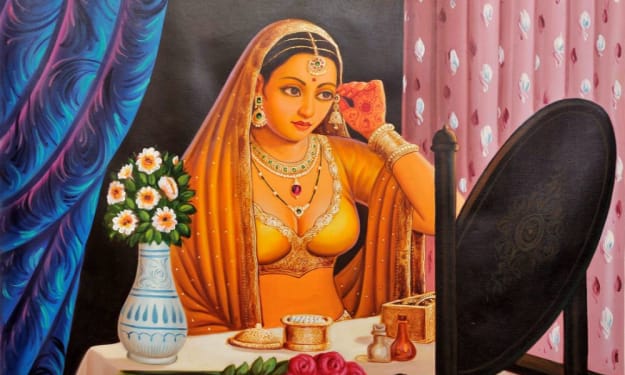The Tragic Tale of Sarah Bartman: A Victim of Exploitation and Prejudice
Unraveling the Dark Story of Sarah Bartman, Known as the "Hottentot Venus"

Introduction
In today's world, many women pay a hefty price to achieve certain physical attributes, but few are aware of the heartbreaking story of Sarah Bartman, also known as the "Hottentot Venus." Her life is a stark reminder of the horrendous experiences endured by countless African people during the era of slavery. In this video, we will shed light on Sarah Bartman's tragic life, her exploitation as a freak show attraction, and the indignities she suffered even after her death.
1. The Early Life of Sarah Bartman
Sarah Bartman was born in 1789 near the Gamtoos River in the Eastern Cape of South Africa. Raised in a family of cattle herders, Sarah's life took a tragic turn when she was orphaned as a teenager, losing her mother at the tender age of two and her father during her teenage years. Sarah's mother belonged to the KhoiKhoi tribe, the oldest indigenous tribe in South Africa, and passed down to her daughter the heritage of a curvaceous figure with well-developed hips and a large buttocks.
2. Sarah's Arrival in Cape Town
As a young orphan, Sarah found herself working as a domestic servant in Cape Town, where she came under the control of Dr. William Dunlop, a Dutch doctor and Royal Navy staff member. Dunlop purchased Sarah from an African farmer from the KhoiKhoi tribe. From this point, Sarah's life took a nightmarish turn.
3. A Contract of Exploitation
Dunlop and his business partner, Hendrick Caesars, a mixed-race entrepreneur, took Sarah to London in 1810, where they coerced her into signing a contract. Under false pretenses, they convinced her that she could earn a significant income by displaying her body as a form of entertainment. This contract marked the beginning of Sarah's exploitation.
4. Sarah Bartman as a Freak Show Attraction
Sarah was made to appear in scanty clothing in front of paying audiences. Her body became a source of fascination, disgust, and amusement for the European public. People were allowed to touch and treat her like an animal. She was subjected to various instructions, from walking to dancing, as long as the audience paid.
5. Sarah's Journey to Paris
In 1814, Sarah was sold to a Parisian animal keeper named Rowe. Her popularity had grown, and she was often displayed at the famous Palais Royal in Paris. There, she was caged alongside baby rhinoceroses, and Rowe instructed her on how to pose in a zoological manner.
6. Object of Scientific Study
Sarah's plight caught the attention of George Cuvier, a renowned French dentist and Surgeon General, who was also the caretaker of the Menagerie at the National Museum of Natural History. He viewed Sarah as a scientific specimen and used her for anatomical studies. Cuvier's observations further fueled racial prejudice, as he compared her movements to those of monkeys.
7. Sarah's Death and Aftermath
Sarah Bartman's life ended tragically on December 29, 1815, at the age of 26, likely due to pneumonia, syphilis, or alcoholism. Even in death, she did not find peace. Cuvier dissected her body for scientific purposes. Her brain, skeleton, and a plaster cast of her body were displayed to the public in Paris.
8. The Return of Sarah Bartman's Remains
It took nearly two centuries for Sarah Bartman's remains to return to her homeland. In 2022, her body was finally returned to South Africa, thanks to the efforts of Nelson Mandela, who requested the French government to do so during his presidency. She was buried in Cape Town, and her resting place was declared a national heritage site.
Conclusion
Sarah Bartman's tragic life serves as a haunting reminder of the exploitation, racial discrimination, and objectification that many African people endured during a dark period in history. Her story sheds light on the deep-seated prejudices of the time and the enduring impact of such exploitation on individuals and communities.






Comments (1)
Great work! Good work!